144 Rexel stores stay compliant using WHS MONITOR™
Rexel was looking for a centralised system to keep on top of its Workplace Health and Safety requirements, they found the solution in WHS MONITOR™.
WHS Monitor caters for all businesses with plans to suit any size.
WHS Monitor is not limited to private companies
WHS Monitor is flexible enough to provide end-to-end compliance solutions for every industry.
WHS Monitor is a flexible software that can be used for any number of compliance related functions
Full service offering that offers all the modules listed including contractors, chemicals, assets, visitors and more
Perfect for team’s with no contractors or chemicals who just need basic compliance for their workers
A standalone chemical management solution that can take care of your chemical inventory and chemical risk compliance
WHS Monitor offer a range of services to get you compliant sooner and stay compliant longer.
Read how WHS Monitor solutions solve compliance for a diverse range of businesses
Rexel was looking for a centralised system to keep on top of its Workplace Health and Safety requirements, they found the solution in WHS MONITOR™.
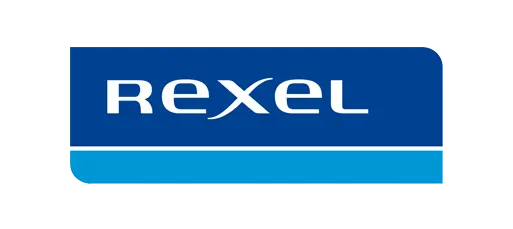
Rexel Australia has been contributing to the development of the trade electrical supplies distribution market worldwide for almost 50 years. With 144 branches nationwide and 1100 employees, Rexel offers a high level of customer service, quality products and information to help customers take advantage of the latest technology and cost saving strategies for their business.
When the company was looking for a centralised system to keep on top of its Workplace Health and Safety requirements, they found the solution in WHS MONITOR™.
“I was looking for a system that would meet our legal requirements, be easy to use for our roles as an electrical supplier that wouldn’t cost us an arm and a leg. Some of the systems our there are far too complicated for use in a wholesaling industry, WHS MONITOR™ is cost-efficient and it enables me to keep all the safety data sheets up to date in one system. We now use the system in 144 locations across Australia and each site has their system tailored to suit their requirements,” said Lionel Heath, Rexel Australia National Health and Safety Manager.
“Overall, I think one of the biggest advantages of WHS MONITOR™ is that it is cloud based and can be accessed remotely. For example, if our Kalgoorlie branch suddenly needed an extra chemical added to the register, they can either load it on to the system themselves or call me to load it remotely.”
Lionel Heath, Rexel Australia National Health and Safety Manager

Having worked with WHS MONITOR™ in his roles in the past, Lionel introduced the system at Rexel Australia almost five years ago. The company uses the modules; Contractor Management and Chemical Management, which Lionel explains are of upmost importance to the business.
“We have a lot of external contractors, so we were looking for a user-friendly system for our staff and the contractors too. There are also systems out there that are free, but contractors have to pay to use the system so we may have lost a lot of contractors. I’ve had great feedback from them since we introduced the system, saying it’s easy to use. Another advantage is that you don’t need to carry a card to access the system at different sites,” he said. “There’s a QR code you can scan so people just keep it on their phone, which is so convenient.”
As well as providing a centralised system for contract management, Lionel was quick to point out WHS MONITOR™ has proved to be a simple and reliable way for Rexel Australia to manage chemicals at each site.
“WHS MONITOR™ have been very helpful listening to some of the ideas I’ve had and incorporating them into the system for us. For example, I wanted a Stock Keeping Unit (SKU) number added to the system so we could search by the SKU for simplicity and they were able to accommodate this,” he said.
“Each site also has the chemical system tailored to their needs because people in South Australia for example only want to look at the chemicals they are using and what they are doing, rather than seeing information from all of the other branches.”
A cloud-based system, WHS MONITOR™ comprises 120 unique, integrated modules across eight core units – HR Safety Management, Contractor Management, Policies and Procedures, Audits and Inspection, Chemical Management, Risk/Incident Management and Asset Management.
Fully customisable, it is suitable for all businesses regardless of size or the industries in which they operate. In other words, businesses can pick and choose the modules and functionality to suit them. And, as time goes on and they grow or change, they can add extra modules.
WHS MONITOR™ can also be accessed via all types of devices (desktop, tablet, mobile etc), and it allows businesses to provide each employee with different levels of access.
“Overall, I think one of the biggest advantages of WHS MONITOR™ is that it is cloud based and can be accessed remotely. For example, if our Kalgoorlie branch suddenly needed an extra chemical added to the register, they can either load it on to the system themselves or call me to load it remotely,” Lionel explained.
“The feedback we’ve received from employees and contractors has been positive. They have all found it easy to use and has enabled us to achieve national consistency. That’s important to the company.”
Attend our on-demand webinar for a complete look at the WHS Monitor system including a walkthrough of all the modules. See what WHS Monitor can do today!

Presented by systems specialist James Young
Get an overview of all of WHS Monitor's modules and how they help your business
Keep an eye on our upcoming industry based events. We will be taking a deep dive into WHS issues and then opening up the floor to questions and discussions.
The nature of the industry – large vehicles operating on public roads, carrying members of the public – means that the company is bound by strict regulatory requirements to ensure business compliance.
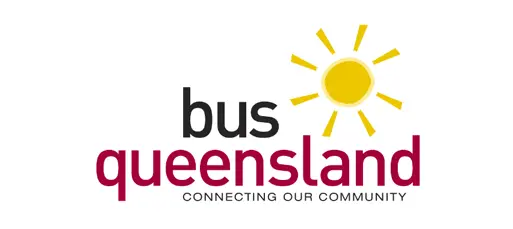
The Pulitano Group is an operator of buses and coaches in Queensland and Victoria, running Bus Queensland, Cranbourne Transit in Melbourne’s south eastern suburbs and Victorian high country specialist carrier, Mansfield Mt Buller Bus Lines.
The nature of the industry – large vehicles operating on public roads, carrying members of the public – means that the company is bound by strict regulatory requirements to ensure business compliance.
This is even more the case for the Bus Queensland arm of the business, which operate urban and school services across greater Brisbane, Ipswich, the Lockyer Valley, Park Ridge and Toowoomba – all of these services are undertaken on Queensland Government contracts.
“ It’s not that we have a lot of incidents throughout our companies, it’s that WHS MONITOR™ has helped develop a reporting culture, the system makes it easy to report hazards as well as to implement corrective action plans.”
Ralph Cobban, National Work Health and Safety Advisor for the Pulitano Group
As the National Work Health and Safety Advisor for the Pulitano Group of Companies, Ralph Cobban, was responsible for introducing WHS Monitor to all operations. A 15 year veteran of the workplace health and safety industry, like many other users of the WHS MONITOR™ compliance management software system, Ralph went looking for a new product that would do the job better.
“We have been using Arventa’s WHS MONITOR™ since May last year and the main reasons why we wanted the system was to better manage risk and compliance areas: to minimise risk of injury to employees and customers, while ensuring we complied with all industry requirements and the more specific needs of our Government contracts,” Ralph said.
“Previously we had used a different system for a couple of years but we were finding that it didn’t meet all of our needs. It was also something that everyone had been told to use – there had been minimal training prior to implementing the system and buy-in from staff was poor.”

The Pulitano Group is using the complete WHS MONITOR™ system across its three businesses and Ralph said that the ability to customise the system and the excellent training provided has led to an enthusiastic response to the program company-wide, according to Ralph.
“Our initial contact with WHS Monitor was very positive and we were encouraged by the ability to tailor the WHS MONITOR™ system to our own requirements, and the process by which this was done was also engaging,” he said.
“We were able to get our management team involved from the outset, WHS Monitor held webinars for us and provided a great platform for two-way communication, which empowered us to customise the system for what we needed.
“Everyone was engaged prior to the system being implemented and this has yielded dividends in people’s willingness and enthusiasm to use the WHS MONITOR™ program.”
As well as helping get staff on-board to better manage workplace health and safety, WHS MONITOR™ was also able to deliver efficiencies over the previous system. Prior to selecting WHS MONITOR™, The Pulitano Group was using a separate business system to monitor unplanned events, effectively causing double-handling of data which caused resentment towards the system by some staff.
Ralph said that a measure of WHS MONITOR’s uptake throughout the group was the popularity of the Incident Management module which includes features such as trends analysis, claims processing, lost time rates, corrective action plans, incident reporting and assessment and much more.
“It’s not that we have a lot of incidents throughout our companies, it’s that WHS MONITOR™ has helped develop a reporting culture, the system makes it easy to report hazards as well as to implement corrective action plans,” he explained.
Another factor that has endeared WHS MONITOR™ to The Pulitano Group is its ease of use.
“Unlike the preceding system, WHS MONITOR™ is much more user-friendly and functional – anyone can pick-up and use the system, you don’t have to be tech-savvy or even a trained safety officer, the system is very intuitive and easily captures everything we need,” Ralph said.
“The information we capture also needs to be easily accessible, our Queensland Bus contracts are all with the Queensland Government who do annual audits as well as spot testing, and using the WHS MONITOR™ platform the data is simple to access.”
The product and training aside, another area in which the WHS MONITOR™ team prides itself is in aftersales service and support, and by all accounts the company is delivery on this front as well, according to Ralph.
“Support from the implementation phase to the present has been fantastic,” he said.
“The system we’ve found to be very robust and reliable, and there’s been an excellent effort to understand our business requirements. We highly recommend the WHS MONITOR™ system to others.”
Attend our on-demand webinar for a complete look at the WHS Monitor system including a walkthrough of all the modules. See what WHS Monitor can do today!

Presented by systems specialist James Young
Get an overview of all of WHS Monitor's modules and how they help your business
Keep an eye on our upcoming industry based events. We will be taking a deep dive into WHS issues and then opening up the floor to questions and discussions.
Without a centralised system, HMR drilling was finding it difficult to keep on top of its WHS compliance requirements. In need of a new approach, the company found the solution in WHS MONITOR™.

Two years ago when Iain Martin-Blakey took on the role of HR and WHS Lead in Australia for Pacific Seeds – a prominent provider of crop solutions for the agricultural sector – what he found was not uncommon in terms of its processes around risk, incident, asset and HR safety management.
“The company was using a lot of paper-based systems, which were quite cumbersome,” Iain said.
“Basically the processes involved people going around with clipboards, making notes, ticking boxes and then imputing the details into spreadsheets before making reports and recommendations.”
Pacific Seeds is primarily a broadacre seed manufacturer that produces seeds at its own farming facility in Toowoomba while also sourcing product from licenced farms. The company then cleans, grades and distributes the seeds to clients Australia-wide.
“The WHS MONITOR™ package is also cost effective. Once up and running and configured, it means less time is required to be spent on compliance, freeing up people’s time to work on other areas of the business”
Iain Martin-Blakey, HR & WHS Lead, Pacific Seeds
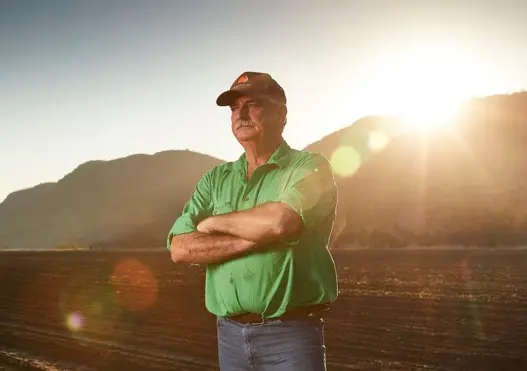
Given the breadth of working situations Pacific Seeds is exposed to, from general farming involving the day to day operation of plant and machinery, as well as the use of processing equipment and management of chemicals including, herbicides, fungicides and insecticides, its operational environment is complex.
Despite this, Iain believed that there was a better way of managing the various workplace procedures, and that there would be benefits in further growing a culture at the company of inclusiveness and raising safety awareness.
“I found that a lot of the responsibility for workplace safety was being left to too few. I wanted others to get on board and take greater responsibility – I wanted everybody to do their bit and become more involved,” he said.
With this mindset, Iain began looking for a platform or system that would let the company reach this goal. Having looked at what was available in the market, including platforms such as iAuditor, he came to the conclusion that these were just not suitable for Pacific Seeds.
“We wanted a centralised system that would be available Australia-wide, an umbrella system capable of providing all of our requirements in one,” Iain said.
Incorporating eight core units comprised of a total of 120 unique, integrated modules, as well as an extensive proprietary database, WHS MONITOR™ enables organisations to simply and effectively comply with their WHS obligations.
The system uses a live feed of its aggregated safety data, along with further information provided by the individual client, the system automatically and seamlessly creates customised WHS and Project Management Plans in real time.
“Pacific Seeds has been using all eight modules provided by WHS MONITOR™ for 18 months now and we are very pleased with what it’s given us – I’m confident that we’ll get even more benefits out of it in the months ahead. And actually, we’re now focusing on institutionalising the system company-wide,” Iain said.
“I didn’t want to implement a ‘veneer’ safety and compliance system, I wanted something that was both deep and wide.”
According to Iain, as well as involving a larger number of Pacific Seeds’ staff in taking greater ownership of risk management, safety compliance and related, the system’s ease of use means that previous processes that were only undertaken haphazardly because of the time taken, are now being closely overseen.
“The process of compliance and safety can be onerous, but WHS MONITOR™ makes it faster and easier – we now have much tighter and safer systems based on WHS,” he said.
“The WHS MONITOR™ package is also cost effective. Once up and running and configured, it means less time is required to be spent on compliance, freeing up people’s time to work on other areas of the business.”
Another benefit of WHS MONITOR™ Iain explained, is the level of advice, support and customisation that comes with the package.
“We’re over the moon with the support that the WHS MONITOR™ team have provided us, it’s been very thorough and the response to all of our requests and questions has been quick,” he said.
“I’m really looking forward to progressing the use of the system at Pacific Seeds in the coming months.”
Attend our on-demand webinar for a complete look at the WHS Monitor system including a walkthrough of all the modules. See what WHS Monitor can do today!

Presented by systems specialist James Young
Get an overview of all of WHS Monitor's modules and how they help your business
Keep an eye on our upcoming industry based events. We will be taking a deep dive into WHS issues and then opening up the floor to questions and discussions.
Due to the wide range of services provided by local government, the responsibilities and therefore the associated risks for any council is extensive.
Likewise, the workplace health and safety issues – and therefore the WHS compliance responsibilities – these bodies face are numerous. They need to be able to ensure that all of their employees are properly trained, all of their workplaces are safe and that correct procedures are always followed.
Due to the responsibility of local government to provide services with the highest level of WHS compliance, councils need to effectively demonstrate, on a daily basis, their commitment to safety. What councils need is a way to streamline WHS processes and demonstrate due diligence at all levels of the organisation.
Uniquely, WHS MONITOR™ automatically delivers a complete work health and safety management plan by drawing from the information contained in all deployed modules.
Accessible via all types of devices (desktop, tablet, mobile) WHS MONITOR™’s interactive Work Health and Safety processes can be applied to all areas of a local council’s operations and responsibility, and for its entire workforce (including full-time employees, part-time and casual employees, and contractors).
Executive level employees have access to dashboard reports which provide an overview of the entire operation. These allow them to exercise due diligence in identifying areas of concern and monitoring completion by department managers, supervisors and so forth.
This is the most efficient approach to health and safety available. Because WHS MONITOR™’s dashboards are dynamic and updated in real time, executives are able to always keep on top of compliance issues.
“WHS MONITOR™ simplifies the potentially complicated and time-consuming task of ensuring WHS compliance for all involved.”
WHS MONITOR™ provides a simple, reliable way to comply with all WHS obligations; Providing councils the peace of mind that comes with knowing theyare doing the right thing by all of their stakeholders.
With a range of access levels, all Council employees have access to all the information they need. In other words, as the road worker and parking inspector are accessing the platform via their mobile phones, WHS personnel and more senior management can simultaneously be viewing the same data from their desktops.
While the workers on the ground would have access only to relevant information to their role, managers and supervisors are provided with access relevant to their role.
In effect, this provides councils with three lines of defence. It means that employees at all levels can do their part to ensure the workplace is safe.
Across Australia, local governments have always strived to lead the way in terms of Workplace Health and Safety. WHS MONITOR™ provides the means to achieve this goal simply and effectively.
Attend our on-demand webinar for a complete look at the WHS Monitor system including a walkthrough of all the modules. See what WHS Monitor can do today!

Presented by systems specialist James Young
Get an overview of all of WHS Monitor's modules and how they help your business
Keep an eye on our upcoming industry based events. We will be taking a deep dive into WHS issues and then opening up the floor to questions and discussions.
Concerned about new chain of responsibility regulations, Hotham Freight turned to WHS MONITOR™ to help meet its workplace health and safety responsibilities. The result was everything the company had hoped for.
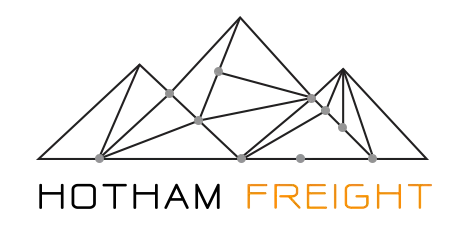
Based in the Victorian town of Bright, Hotham Freight provides year-round freight services from Melbourne, Albury, Wodonga and Wangaratta to the Victorian ski resorts of Mt Hotham, Dinner Plain and Falls Creek.
“We work with a wholesale food business called Peak Pantry. We do the transport and distribution for them up to the ski fields,” said Hotham Freight Director, Adam Booth.
As Adam explained, the company employs six people in total including drivers and warehouse workers.
Adam Booth – Director
“In terms of Workplace Health and Safety (WH&S), our main areas of concern include transport and driver fatigue, along with the possibility of musculoskeletal injuries in the warehouse,” said Adam.
“On top of that, there are the health risks associated with working in the sub-zero conditions of the Alpine National Park.”
As Adam was quick to point out, Hotham Freight views workplace health and safety as a top priority.
“As a rule, we carry out training (including first aid) once a year; we run pre-employment medical checks before putting anybody on; and all our store people receive expert instruction on correct lifting techniques and so forth,” he said.
Asked why the company chose WHS MONITOR™, Adam pointed to the impact of recent legislative changes.
“We implemented the system in response to the national chain of responsibility law changes that were introduced in 2018,” he said.
“Frankly, I don’t think a lot of people really understand the requirements in terms of things like reporting. They don’t realise that the law now requires a three-step process, including sign off on delivery and full documentation.
According to Adam, that’s why he first considered WHS MONITOR™. It seemed to be a reliable and simple way for Hotham Freight to comply with its physical chain of responsibility obligations.
“When I started discussions with WHS MONITOR™, it didn’t take long for me to realise that my initial instinct was right. I had a lot of questions about what we do and if the system had the functionality we would require, and the answer to every one of these questions was ‘yes’,” he said. “It does everything we want it to do.”
A cloud-based system, WHS MONITOR™ comprises 120 unique, integrated modules across eight core units – HR Safety Management, Contractor Management, Policies & Procedures, Audits & Inspection, Compliance/Safety Self Audit, WHS Project Management, Chemical Management, Reporting, and Mobile & Digital Access.
Fully customisable, it is suitable for all businesses regardless of size or the industries in which they operate. In other words, businesses can pick and choose the modules and functionality that suit them. And, as time goes on and they grow or change, they can add (or drop) modules.
The modules that Hotham Freight uses are Induction, SQ & E Systems, and Policies & Procedures. As Adam explained, the company has not yet implemented the Environment & Chemicals module, but plans to do so in due course.
“While we don’t transport chemicals of any kind, this module will cover all the materials (oils, etc.) we use to maintain our fleet.” he said.
WHS MONITOR™ can be accessed via all types of devices (desktop, tablet, mobile, etc.), and it allows businesses to provide each employee with different levels of access.
“As the company’s Director, I control most of it through my desktop, then all our drivers have the mobile app and can access what they need,” said Adam.
“These guys all use it on a daily basis, mainly for pre-starts. They carry out vehicle inspections in the morning, then during the day if they identify anything on their vehicles that isn’t working, they can log it immediately.”

Not restricted just to an organisation’s own employees, WHS MONITOR™ can also be used with contractors and other external workers.
“While we use it mainly for our own employees, we do use external mechanics, and we were able to register them within the system as such,” said Adam.
He said that, following the positive experience when he first approached WHS MONITOR™, the implementation of the system also went very smoothly.
“The team down there were all really helpful and were ready to assist with anything we needed. Overall, I would say that WHS MONITOR™ has provided us with the peace of mind that comes with knowing that we are meeting all our legal responsibilities. Having it means we know we are doing the right thing by our employees. That’s important to me.” said Adam.
“And, on top of that, it has simplified the whole process of compliance. If I tried to do on paper what I can do with WHS MONITOR™, I reckon it would take me about two and a half days a week. Now, it only takes me two hours.”
Attend our on-demand webinar for a complete look at the WHS Monitor system including a walkthrough of all the modules. See what WHS Monitor can do today!

Presented by systems specialist James Young
Get an overview of all of WHS Monitor's modules and how they help your business
Keep an eye on our upcoming industry based events. We will be taking a deep dive into WHS issues and then opening up the floor to questions and discussions.
The selection of a HSEQ management system for a company can be a daunting task. There are many different systems on the market, which can vary greatly in complexity, scope and ease of use. The more advanced systems are cloud/internet based while others are still paper based.
Before making a purchase there are a number of steps that need to be completed to ensure the system is fit for purpose.
The first step is to establish the need for a system within the organisation. Is a system legally required to maintain legislative compliance? or will it for the basis for can intergraded management system designed to fulfil the requirements of a number of ISO standards?
Once the need for a system has been established a scope of work needs to be drawn up. The scope of work should detail all of the organisations requirements in relation to a HSE management system. It is the wish list for the organisation, this can be a graphical representation of the requirements or it could be a detailed list of requirements.
Below is an example of a graphic scope of work for a potential management system.
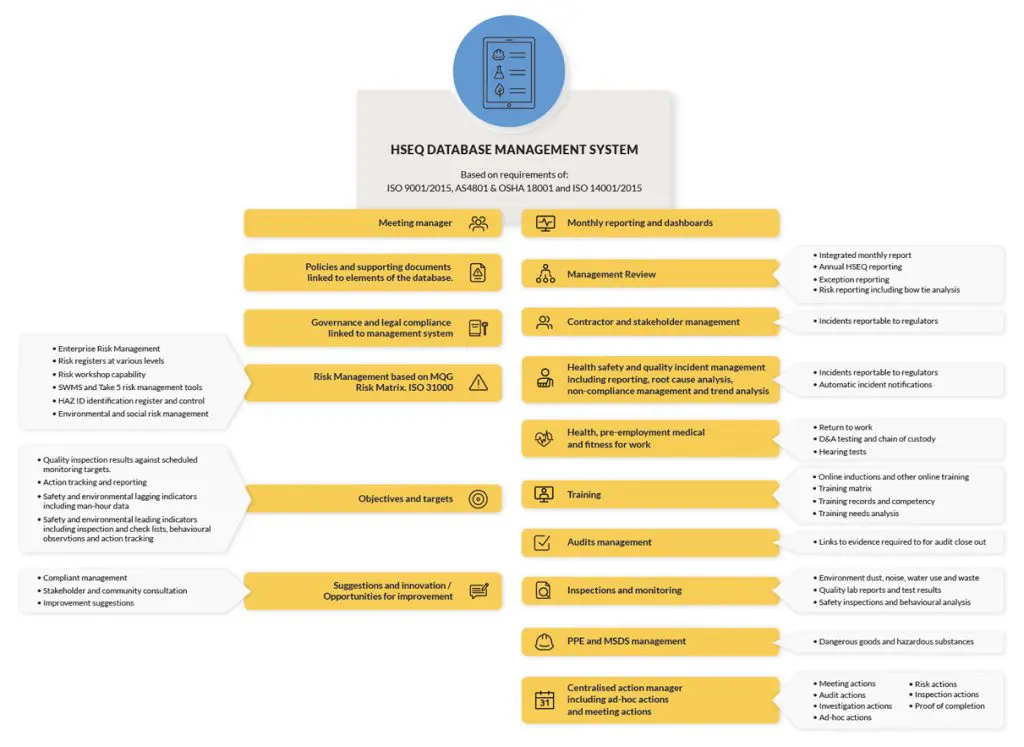
Once the scope of the WHS system has been established we can start to look at the specifications. A system specification is made up of the details that make up each element in the scope, such as:
Once we have worked out the scope and attached a list of specifications we can then effectively develop a project proposal. The an example structure for a project proposal can be found below.
| Project title: | Integrated HSEQ Management System (IMS) |
| Deliver date: | Key project dates |
| Summary | A summary of why there is a need for the system. |
| Overview: | Project Overview:
|
| Departments | Detail the stake holders involved in the project. |
| Current Review and Analysis | Statement of current situation. |
| Strategy/Plan | Implementation strategy and plan. |
| System evaluation | Process to be used to evaluate quotes. |
| Action plan | A list of actionable tasks with deadlines |
| Resources required | Who else will be involved in the project? |
The project proposal can then be used as a tender document to find a product with the right fit. This doesnt need be a complex document but should at least include the specification that has been developed for the system.
Attend our on-demand webinar for a complete look at the WHS Monitor system including a walkthrough of all the modules. See what WHS Monitor can do today!

Presented by systems specialist James Young
Get an overview of all of WHS Monitor's modules and how they help your business
Keep an eye on our upcoming industry based events. We will be taking a deep dive into WHS issues and then opening up the floor to questions and discussions.
Every worksite has a wide range of risks, it can be hard to keep track of all the risks on a site. Without knowing that a risk exists it is impossible to control effectively. To ensure that your workers are as safe as possible the worksite must be assessed for risks.
The aim of Risk Management is to prevent incidents from occurring, and as such is one of the most important aspects of an organisation’s WHS system.
Before making a purchase there are a number of steps that need to be completed to ensure the system is fit for purpose.
Many organisations keep pre-completed risk assessments for particular task (such as welding). These generic documents only assess the risks that relate specifically to that task. On the other hand a site risk assessment assesses the risks of all tasks performed on the site, as well as assessing how these activities might interact and considering other site-specific factors (such as weather).
While risk assessments for specific tasks or activities can be useful, without an overall site assessment some hazards may be overlooked. For example, in a situation where two tasks are to be performed on a worksite at the same time, each worker may perform their own risk assessment, considering the risks of their own task, but may fail to take into account the hazards arising from the other activity. Likewise risk assessments may focus on the hazards of a particular task without considering how the task will be performed on site. It’s only by stepping back and considering the whole site that you can get the full picture – the site risk profile.
The worksite’s complete risk profile can be identified using a site risk assessment, also known as a risk register.
Attend our on-demand webinar for a complete look at the WHS Monitor system including a walkthrough of all the modules. See what WHS Monitor can do today!

Presented by systems specialist James Young
Get an overview of all of WHS Monitor's modules and how they help your business
Keep an eye on our upcoming industry based events. We will be taking a deep dive into WHS issues and then opening up the floor to questions and discussions.
Every worksite has a wide range of risks, it can be hard to keep track of all the risks on a site. Without knowing that a risk exists it is impossible to control effectively. To ensure that your workers are as safe as possible the worksite must be assessed for risks.
The aim of Risk Management is to prevent incidents from occurring, and as such is one of the most important aspects of an organisation’s WHS system.
Before making a purchase there are a number of steps that need to be completed to ensure the system is fit for purpose.
All too often organisations focus on managing risks to employee’s physical health and safety and neglect their employee’s mental health.
Psychological injuries can be long lasting and costly, often requiring more time off work than physical injuries. Mental health can be affected by a range of factors, so it is important to adequately manage mental health risks in your workplace.
Every year 7,200 compensation claims are made for work-related psychological injuries, Resulting in payouts of over $500 million
While work-related mental health injuries mare most common in occupations that are exposed to violent or traumatic situations, such as police, fire fighters or the defence force, over 90% of mental health claims were caused by work-related stress, which can occur in any occupation
The world health report showed: “more working days are lost as a result of mental disorders than physical conditions” – psychological injuries are often more expensive and require more time off work
in 2010-2015 typical mental health claims cost $15,000 more than the average for all injuries
Animation And required almost 10 weeks more time off
Additionally, a poor state of mental health can impact a person’s physical health, with depressed workers taking 20 times more time off work than average
Attend our on-demand webinar for a complete look at the WHS Monitor system including a walkthrough of all the modules. See what WHS Monitor can do today!

Presented by systems specialist James Young
Get an overview of all of WHS Monitor's modules and how they help your business
Keep an eye on our upcoming industry based events. We will be taking a deep dive into WHS issues and then opening up the floor to questions and discussions.
Unfortunately, it is both difficult and time consuming to provide people with adequate information. In an informal induction some topics may be forgotten or only briefly mentioned It can also be hard to tell if the information has been absorbed and fully understood.
Visitors and contractors may also be overlooked. Without accurate records it’s impossible to tell who has or hasn’t been inducted.
Use WHS Monitor to create automated and highly interactive online inductions.
Attend our on-demand webinar for a complete look at the WHS Monitor system including a walkthrough of all the modules. See what WHS Monitor can do today!

Presented by systems specialist James Young
Get an overview of all of WHS Monitor's modules and how they help your business
Keep an eye on our upcoming industry based events. We will be taking a deep dive into WHS issues and then opening up the floor to questions and discussions.
Every organisation uses tools in the course of their business operations, and it can be hard to ensure that every item of equipment is always fit for purpose. Without knowing that equipment is in good condition workers run the risk of serious injury every time they use it.
The more complex the machine, the greater the risk of injury. To ensure that all equipment is safe to use each item should be properly inspected prior to use.
In order to ensure that the task or equipment is used safely, certain things should be included in a pre-start inspection, such as:
All of these constitute the framework for assessing the task or equipment – or the Pre-start
For example, a worker may think that if they checked the equipment yesterday and it was fine, then it must be in good condition today. However, there may have been a small defect, such as a slow leak, that wasn’t noticed and could develop into a major fault.
Or, in the absence of warning lights a worker may assume that everything is fine, however there may be hidden faults that a visual inspection would reveal.
Operating a machine without performing a pre-start is like playing Russian roulette. Sooner or later something will go wrong.
So, it’s not enough to simply service an item of equipment on a regular basis
The problems that can arise may happen within a very short period of time. Equipment warning indicators are not perfect. They can only tell if certain aspects of the equipment are not working as they should. Together, warning indicators and pre-start inspections provide a more complete picture of the safety and usability of an item of equipment.
So, to be successful, a safety management system needs to be established to effectively setup and monitor pre-start safety inspections for tasks and equipment. And never assume equipment is safe until you have completed the checklist.
Attend our on-demand webinar for a complete look at the WHS Monitor system including a walkthrough of all the modules. See what WHS Monitor can do today!

Presented by systems specialist James Young
Get an overview of all of WHS Monitor's modules and how they help your business
Keep an eye on our upcoming industry based events. We will be taking a deep dive into WHS issues and then opening up the floor to questions and discussions.